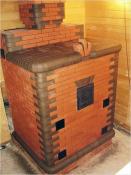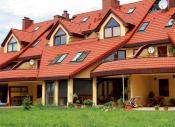Search
Login
Recommended
How to increase the sound insulation of the floor in the apartment, practical tips for laying soundproofing the floor in a modern apartment
Hey, you up there! Do not stomp like elephants,
Take a break from yourself, well give, give silence!
The words of this humorous song to many residents of apartment buildings do not seem funny. After all, the problem of soundproofing the floor was before, but in a modern apartment, with the advent of such flooring, such as laminate, it became even more acute. Is there really no way to handle the noise? There is sound insulation of the floor of the apartment. And we will tell you how and how to soundproof the floors in your apartment.
Content
- Floor in a modern apartment: to insulate, level or soundproof?
- Soundproofing floor in the apartment materials
- Soundproofing the floor: types and methods
- Noise floor insulation do it yourself video video
Floor in a modern apartment: to insulate, level or soundproof?
Having bought or built our long-awaited apartment, we want to make it a cozy corner in which it will be pleasant and comfortable to live. And we start the realization of this dream with repair.
Repair in the apartment, we start, of course, from the floor. And here questions arise: what needs to be done with him, the floor?
To insulate, level or soundproof? You need to do it and you can do it all at once.
This is quite possible, although it will require additional funds, very little time and will steal from the height of the premises, at least 10 cm. But, as a result, the apartment will not only be warmer, quieter and even with beautiful floors, but also comfortable for you and your neighbors below. And all because, practically, all materials with high heat-insulating properties are good noise isolators.
What can insulate and provide significant sound insulation of floors in a modern apartment?
Soundproofing floor in the apartment materials
To begin with, all materials provide sound insulation of the floor, to one degree or another.


But, in order to achieve effective sound insulation with concrete screeds, they need to be made of incredible thickness, which is impossible under the conditions of repairing a finished standard apartment, and even on the upper floors, because it is impossible to overload the construction of the house. Therefore, the best sound insulation for the floor in a modern apartment, in a typical house, on any floor is
- polystyrene foam and special soundproofing compounds based on it:the most common option for soundproofing floors in apartments and houses. This is because expanded polystyrene is cheap, accessible, simple and safe to use (with the exception of expanded polystyrene foam).
- mineral wool, differs more in sound insulation than foam polystyrene, is also affordable and easy to install, but is more often used as a heater, rather than a soundproofing material.
- eco-cotton wool, environmentally friendly, but so far not widespread, among residents of apartment buildings, material for heat and sound insulation of walls and floors in an apartment.
- expanded clay, one of the first, cheap, easy to use, universal for the floor (all types of screeds), heat and sound insulating, and, today, is in the same great demand material.
All these heat and sound insulating materials are easily and quickly installed and provide soundproofing of the floor quite acceptable for a typical apartment, with a layer of 5-10 cm.
But it’s not enough to just lay them on the floor, you need to do it right to ensure that we still need the sound insulation of the floor. Otherwise, we run the risk of getting an even, warm and also well-conducting noise floor.
Consider the basic general rules and the diverse uses of each soundproofing material.
Soundproofing the floor: types and methods
Common to any method and soundproofing material, when organizing soundproofing of the floor is that:
- floor insulation looks like a puff cake, i.e., consists of several layers, the obligatory of them are: soundproofing, waterproofing, draft floor and finish coating.

- the rough and fair floors must not come into contact with the wall surface, i.e., there should be a gap of approximately 2.5 cm. (Often this gap is filled with basic soundproofing material or filled with silicone.) This is necessary so that sound vibrations (noise) from the floor are not transmitted up and down the walls, and the floor insulation really works. And the system of such floors is called floating floors.
Types and methods of organizing sound insulation of the floor:
- under a cement-sand screed:screed floor insulation looks like this

A layer of sound insulation (polystyrene foam, mineral wool), a layer of waterproofing, which can be a simple dense plastic film, reinforcing mesh and screed on the beacons. On which, after its final drying, after 28 days, it will be possible to lay the final coating, for example, ceramic tiles, linoleum and laminate (but, necessarily, with a substrate, it also provides additional sound insulation of the floor under the laminate).
- dry screed:soundproofing floors in itself, as consists of a waterproofing layer, the main layer - expanded clay, aligned with beacons, with gypsum-fiber plates laid on it.


- under the floors on adjustable lags: floors on adjustable logs, even without insulation and sound insulation, poorly conduct sound due to the air gap.

But, if a layer of sound insulation is laid under and between the lags, and a plywood or OSB board is made a draft layer, then the result will be the quietest floor. True, with a small caveat, it is not the same floor you can not put ceramic tiles on tile glue.

Noise floor insulation do it yourself
Soundproofing for the floor in the apartment is a responsible matter, requiring theoretical preparation and the presence of at least a standard set of tools, but quite affordable in order to make it, do-it-yourself soundproofing of the floor. And if you’ve already decided everything, you know exactly how and what to do for a quiet floor, then these video instructions can help you achieve your goal:





